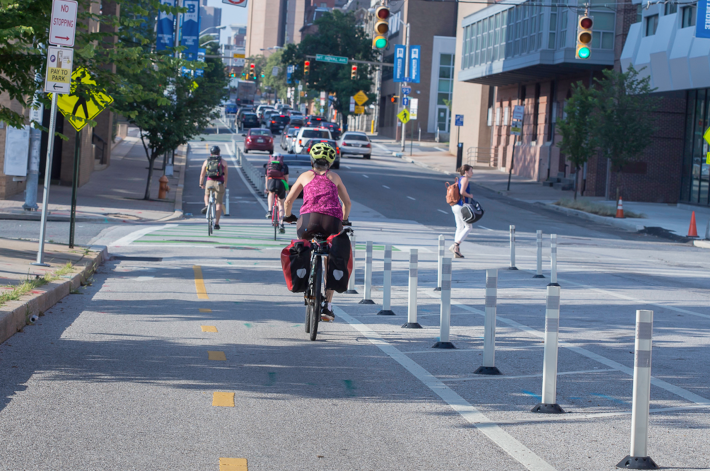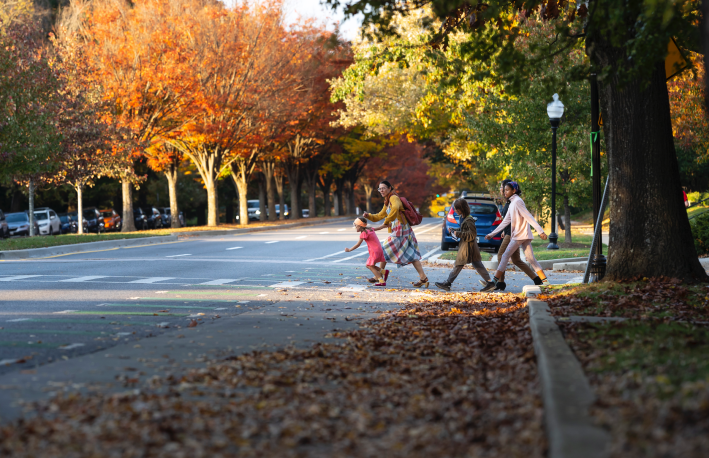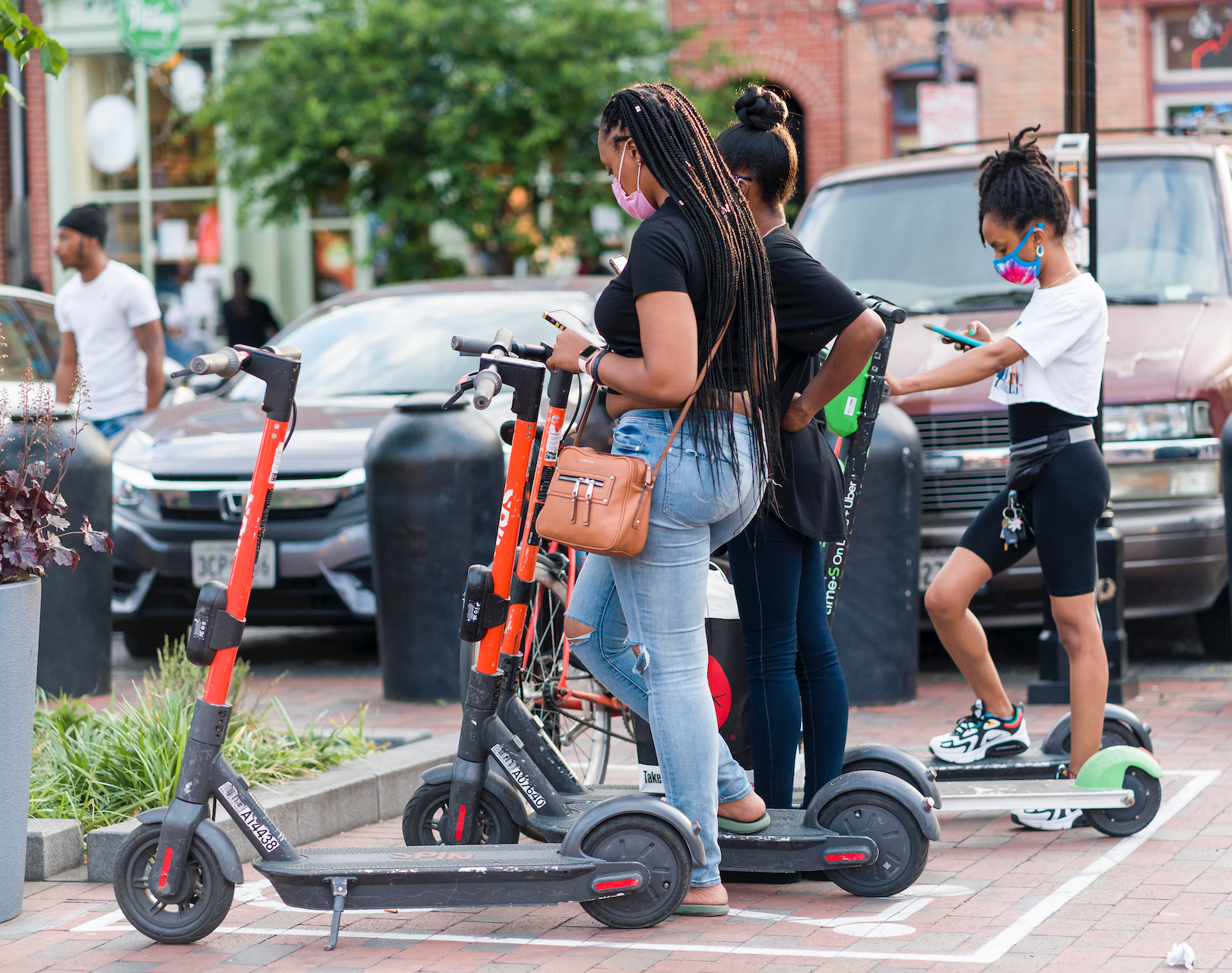Editor's note: this article is an excerpt from the Vision Zero Cities Journal and is republished with permission. For more information on the Vision Zero Cities 2024 conference, click here.
As a public servant who has worked in transportation planning at municipal, state, and federal levels, I have seen the highs and lows of the public process, especially when it comes to new technology. My interest in emerging transportation modes leads people to question my choice to work for the government. New technology and government are not always a natural fit — we didn’t build the algorithm for Uber and we’re struggling to fairly regulate e-bikes, e-scooters, and autonomous vehicles. However, I’m drawn to working for the government in emerging fields because of the role of public institutions in working towards the public good and the power they yield over the public right of way. My experiences as a regulator, administrator, and facilitator have led me to conclude that public servants are uniquely empowered to fight for safer streets in the age of rapid technological change — if we call people in toward a shared goal.
Many governmental entities are getting on board with Vision Zero, Complete Streets, and climate mandates, but struggle with implementation. This is where the role of a transportation planner is irreplaceable. It is a pivotal time for a public servant to examine policies, create new processes, and guide unprecedented investment as technological advances popularize new vehicles that can benefit safety and the environment. Despite the challenges, I’ve found success in creating programs, policies, and processes through a “call-in approach”. This means I do my research, work to build consensus, ask for feedback, and monitor impacts.

Do Your Research
My first suggestion for someone regulating a new field is to learn from the experts. Start by outlining your questions. Then, dive into the research. For new technologies, it’s important to check sources and know where real research is done, research not led by companies or venture capitalists that have a stake in your outcome, but unbiased research and development.
When dockless e-scooters flooded city streets faster than regulations were put in place, I was brought into the Baltimore City Department of Transportation to reconcile their benefits with the public good. Luckily for me, the same thing was happening around the world, and I was able to find my cohort in the National Association of City Transportation Officials. NACTO created one of the first forums for city regulators to share experiences, discuss how the new technology impacted communities, and cross-reference expert research. Luckily, there is a conference and a working group for almost everything which can help quickly broaden your knowledge base.

Build Consensus
Building consensus around shared goals for a new program helps chart a course and provide tangible benchmarks. These goals can be powerful talking points and guide where the public can have input. With clear goals from the beginning, you can make an implementation plan with decision-making processes and understand the junctures at which you need feedback to track efficacy, iterate, and improve.
I see consensus-building frequently overlooked in internal policy changes. Every agency I’ve worked at has struggled to implement Complete Streets policies internally. When asking a division to make changes, policymakers need to assist with guiding the implementation plan by working with staff to build consensus around how processes currently work and how they must change to fit new policies. Training needs to include every level of employee from maintenance workers to engineers to know how their approach may need to shift to support mandates for safety and streets for all.

Ask Your Community
As a public servant, you have to call upon people from your community and those with expertise in your surrounding environment. This needs to be integrated into every stage of a project, but you must have the groundwork of research and goal outcomes first so it can be done with intention and facilitation. Without this, you run the risk of asking people for their time with nothing concrete to show for it, a recipe for “planning fatigue” where communities lose faith and trust in their civic institutions. Instead, if you come in with realistic possibilities, you can create different options for involvement and a menu of ways for community members to give feedback. When working with local experts, like your partner agencies or local advocates, as well as the general public, it’s key to acknowledge what challenges they face and what they want from their government. These conversations also help define local stakeholder roles, understand how they can be involved, and give you an opening to share other perspectives. Facilitation and active listening are an essential part of every project, but especially for new programs.
Baltimore City now surveys micromobility riders annually directly through the dockless vehicle apps on topics including riding purpose, utilization of equity programs, vehicle preferences, and suggestions for improving the program. At the onset of the program, we solicited feedback from non-riders at neighborhood association meetings and official public comment periods. While this was invaluable, when making decisions for safety, there are times when quantitative data must outweigh qualitative feedback. We collected safety data from local institutions like the University of Maryland National Study Center for Trauma and EMS, as well as Baltimore’s traffic enforcement officers. This combination of local expertise from lived experience and subject matter experts led to improvements to encourage proper parking, safer vehicles, and more outreach requirements to provide education on how to use the new vehicles.

Monitor Impacts
Even with a call-in approach, there are limits to stakeholder feedback — not everyone self-reports accurately. Riders can tell you how comfortable a new scooter model is to ride, but drivers rarely report changes to travel time accurately. Luckily, new technology, if permitted with proper data reporting requirements and security for users, provides more data than ever for multimodal planning.
In cities across the country, we’re seeing models for pilots and quick-build temporary projects that can allow testing around a shared goal. Smart Growth America has led Complete Streets Leadership Academies across the nation to facilitate quick build, temporary projects on state roads in partnership with the local jurisdictions. With explicit goals such as pedestrian safety, slowing motor vehicles, and slowing turning movements, these partnerships push engineers to design under a clear prerogative. For a quick build project in Maryland, Smart Growth is pushing state engineers to prioritize people walking over vehicles and using technology for real-time data collection. Using only a temporary project for testing and monitoring, we can see if the measurable result on traffic speed and safety persuades more of our engineers to think of people walking first.
In the face of new technology, public servants are more crucial than ever. We can convene and build bridges for everyone — from your neighbor to a venture capitalist — to understand how to share the roadway. Sure, bureaucracy can feel like a slog, but by bringing people to consensus, asking them to share their perspectives, and actively monitoring results, we have the power to be an arbitrator who answers to the people and not profit. We can ensure that roadways harness technology without sacrificing safety and access for all.






